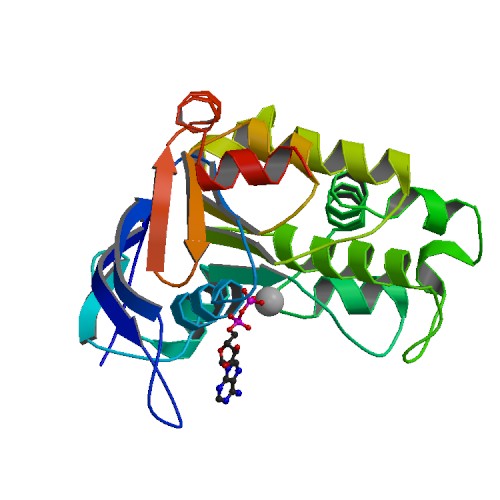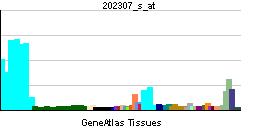TAP1
| Transporter 1, ATP-binding cassette, sub-family B (MDR/TAP) | |||||||||||
|---|---|---|---|---|---|---|---|---|---|---|---|
 PDB rendering based on 1jj7. | |||||||||||
| Identifiers | |||||||||||
| Symbols | TAP1 ; APT1; ABC17; ABCB2; D6S114E; FLJ26666; FLJ41500; PSF1; RING4; TAP1*0102N; TAP1N | ||||||||||
| External IDs | Template:OMIM5 Template:MGI HomoloGene: 495 | ||||||||||
| |||||||||||
| RNA expression pattern | |||||||||||
 | |||||||||||
| More reference expression data | |||||||||||
| Orthologs | |||||||||||
| Template:GNF Ortholog box | |||||||||||
| Species | Human | Mouse | |||||||||
| Entrez | n/a | n/a | |||||||||
| Ensembl | n/a | n/a | |||||||||
| UniProt | n/a | n/a | |||||||||
| RefSeq (mRNA) | n/a | n/a | |||||||||
| RefSeq (protein) | n/a | n/a | |||||||||
| Location (UCSC) | n/a | n/a | |||||||||
| PubMed search | n/a | n/a | |||||||||
Editor-In-Chief: C. Michael Gibson, M.S., M.D. [1]
Overview
Transporter 1, ATP-binding cassette, sub-family B (MDR/TAP), also known as TAP1, is a human gene. The membrane-associated protein encoded by this gene is a member of the superfamily of ATP-binding cassette (ABC) transporters. ABC proteins transport various molecules across extra- and intra-cellular membranes. ABC genes are divided into seven distinct subfamilies (ABC1, MDR/TAP, MRP, ALD, OABP, GCN20, White). This protein is a member of the MDR/TAP subfamily. Members of the MDR/TAP subfamily are involved in multidrug resistance. The protein encoded by this gene is involved in the pumping of degraded cytosolic peptides across the endoplasmic reticulum into the membrane-bound compartment where class I molecules assemble. Mutations in this gene may be associated with ankylosing spondylitis, insulin-dependent diabetes mellitus, and celiac disease.[1]
See also
References
Further reading
- Townsend A, Trowsdale J (1993). "The transporters associated with antigen presentation". Semin. Cell Biol. 4 (1): 53–61. PMID 8453065.
- Schölz C, Tampé R (2006). "The intracellular antigen transport machinery TAP in adaptive immunity and virus escape mechanisms". J. Bioenerg. Biomembr. 37 (6): 509–15. doi:10.1007/s10863-005-9500-1. PMID 16691491.
- Beck S, Kelly A, Radley E; et al. (1992). "DNA sequence analysis of 66 kb of the human MHC class II region encoding a cluster of genes for antigen processing". J. Mol. Biol. 228 (2): 433–41. PMID 1453454.
- Bodmer JG, Marsh SG, Albert ED; et al. (1992). "Nomenclature for factors of the HLA system, 1991. WHO Nomenclature Committee for factors of the HLA system". Tissue Antigens. 39 (4): 161–73. PMID 1529427.
- Colonna M, Bresnahan M, Bahram S; et al. (1992). "Allelic variants of the human putative peptide transporter involved in antigen processing". Proc. Natl. Acad. Sci. U.S.A. 89 (9): 3932–6. PMID 1570316.
- Bahram S, Arnold D, Bresnahan M; et al. (1991). "Two putative subunits of a peptide pump encoded in the human major histocompatibility complex class II region". Proc. Natl. Acad. Sci. U.S.A. 88 (22): 10094–8. PMID 1946428.
- Trowsdale J, Hanson I, Mockridge I; et al. (1991). "Sequences encoded in the class II region of the MHC related to the 'ABC' superfamily of transporters". Nature. 348 (6303): 741–4. doi:10.1038/348741a0. PMID 2259383.
- Spies T, Bresnahan M, Bahram S; et al. (1991). "A gene in the human major histocompatibility complex class II region controlling the class I antigen presentation pathway". Nature. 348 (6303): 744–7. doi:10.1038/348744a0. PMID 2259384.
- Cerundolo V, Alexander J, Anderson K; et al. (1990). "Presentation of viral antigen controlled by a gene in the major histocompatibility complex". Nature. 345 (6274): 449–52. doi:10.1038/345449a0. PMID 2342577.
- Szafer F, Oksenberg JR, Steinman L (1994). "New allelic polymorphisms in TAP genes". Immunogenetics. 39 (5): 374. PMID 8168860.
- Jackson DG, Capra JD (1994). "TAP1 alleles in insulin-dependent diabetes mellitus: a newly defined centromeric boundary of disease susceptibility". Proc. Natl. Acad. Sci. U.S.A. 90 (23): 11079–83. PMID 8248212.
- Glynne R, Kerr LA, Mockridge I; et al. (1993). "The major histocompatibility complex-encoded proteasome component LMP7: alternative first exons and post-translational processing". Eur. J. Immunol. 23 (4): 860–6. PMID 8458375.
- Beck S, Abdulla S, Alderton RP; et al. (1996). "Evolutionary dynamics of non-coding sequences within the class II region of the human MHC". J. Mol. Biol. 255 (1): 1–13. doi:10.1006/jmbi.1996.0001. PMID 8568858.
- Chen HL, Gabrilovich D, Tampé R; et al. (1996). "A functionally defective allele of TAP1 results in loss of MHC class I antigen presentation in a human lung cancer". Nat. Genet. 13 (2): 210–3. doi:10.1038/ng0696-210. PMID 8640228.
- Ahn K, Meyer TH, Uebel S; et al. (1996). "Molecular mechanism and species specificity of TAP inhibition by herpes simplex virus ICP47". EMBO J. 15 (13): 3247–55. PMID 8670825.
- Lewis JW, Neisig A, Neefjes J, Elliott T (1997). "Point mutations in the alpha 2 domain of HLA-A2.1 define a functionally relevant interaction with TAP". Curr. Biol. 6 (7): 873–83. PMID 8805302.
- Nijenhuis M, Hämmerling GJ (1997). "Multiple regions of the transporter associated with antigen processing (TAP) contribute to its peptide binding site". J. Immunol. 157 (12): 5467–77. PMID 8955196.
- Gobin SJ, Wilson L, Keijsers V, Van den Elsen PJ (1997). "Antigen processing and presentation by human trophoblast-derived cell lines". J. Immunol. 158 (8): 3587–92. PMID 9103419.
- Ahn K, Gruhler A, Galocha B; et al. (1997). "The ER-luminal domain of the HCMV glycoprotein US6 inhibits peptide translocation by TAP". Immunity. 6 (5): 613–21. PMID 9175839.
External links
- TAP1+protein,+human at the US National Library of Medicine Medical Subject Headings (MeSH)
This article incorporates text from the United States National Library of Medicine, which is in the public domain.